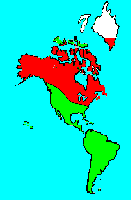SPECIES INFO
Musky, Esox masquinongy, is only native to a small area in the United States including parts of northern Wisconsin and parts of the upper peninsula of Michigan. Whether examples in upstate New York (and other areas) were originally stocked or native is open to conjecture. However, because of its large size, good eating, and great sporting challenge, this species is being stocked in northern lakes and as far south as Missouri. This species can grow to at least five feet in length and weigh over seventy pounds. Muskies can be recognized by the dark pattern of bars on their light colored side and their tremendous size.Pike genus (Esox) was originally native to the Northern Hemisphere, but has been introduced on a wider scale. There are four natural species found in North America: grass pickerel, chain pickerel, musky, and northern pike. There are also some man-made hybrids that have been stocked in selected lakes. The amur pike (Esox reicherti) is found in northeastern Asia.
An interesting case of convergent evolution occurs between the barracudas of the marine oceans and the various freshwater pikes. The elongate shape and eating habits of these two groups are similar. However, the pikes are a group of very primitive fish in their own order. The barracudas belong in the perch order of advanced fish.
Pikes, Family Esocidae, are a small family of only five species found in the Northern Hemisphere. They are found only in freshwater. They are characterized by having a long narrow appearance, with a large wide mouth and usually a flattened head. The rays in the fins are not bony.
Salmon Group, Order Salmoniformes, is found worldwide in oceans. It is also found in freshwater in many places in North America. A great number of the large game and sport fish are found in this order.
Bony fish, Class Teleostomi, are a class of chordates that include the majority of fish-like animals found on earth. They are characterized by a bony jaw and a bony skeleton. They are found in both fresh and marine waters.
Backboned Animals (Phylum Chordata) are the most advanced group of animals on earth. These animals are characterized by having a spinal cord or backbone. Most members have a clearly defined brain that controls the organism through a spinal cord. Fish, amphibians, reptiles, birds, and mammals are in this phylum.
Currently, some taxonomists believe that the fish should be divided into two groups (sharks and regular fishes) and that there are some other primitive groups in the phylum such as hagfish or lampreys.
Animal Kingdom contains numerous organisms that feed on other animals or plants. Included in the animal kingdom are the lower marine invertebrates such as sponges and corals, the jointed legged animals such as insects and spiders, and the backboned animals such as fish, amphibians, reptiles, birds, and mammals.




